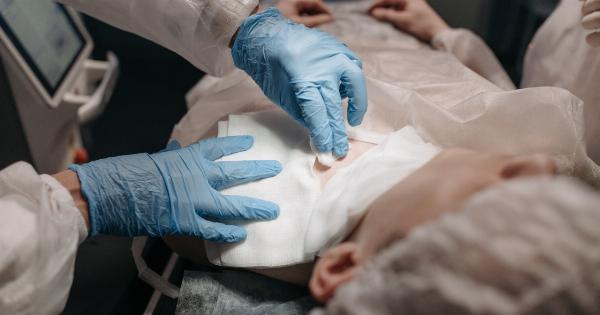People with chronic obstructive pulmonary disease (COPD) often face unique challenges when it comes to undergoing surgery. COPD, a progressive lung disease, affects the airways and makes it difficult to breathe.
It can lead to complications during and after surgery, making it crucial to assess the risks thoroughly. This article aims to explore the various aspects of assessing surgical risks for people with COPD and the strategies that can be employed to mitigate them.
Understanding COPD
COPD is a debilitating condition characterized by inflammation and obstruction of the airways. The primary cause of COPD is long-term exposure to harmful substances, typically cigarette smoke.
Other risk factors include exposure to occupational dust and chemicals, air pollution, and genetic predisposition.
The hallmark symptoms of COPD include shortness of breath, chronic cough, wheezing, and excess production of mucus. As the disease progresses, individuals may experience frequent respiratory infections and worsening respiratory function.
Challenges of Surgery for People with COPD
Undergoing surgery poses unique challenges for individuals with COPD due to compromised respiratory function. General anesthesia and the side effects of medications can further impair lung function, leading to complications post-operatively.
Common challenges include:.
1. Increased risk of respiratory infections
2. Difficulty tolerating anesthesia
3. Impaired lung function
4. Delayed wound healing
5. Increased risk of pneumonia
6. Higher rates of post-operative complications
7.
Prolonged hospital stays
8. Increased need for intensive care unit (ICU) admissions
9. Higher mortality rates.
Preoperative Assessment
Thorough preoperative assessment is crucial for individuals with COPD to determine the best course of action. The assessment includes evaluating pulmonary function through spirometry, arterial blood gas analysis, and exercise tolerance testing.
Pulmonary consultations before surgery help identify the severity of COPD and determine the patient’s lung function capacity.
Various markers, such as forced expiratory volume in one second (FEV1) and the ratio of FEV1 to forced vital capacity (FVC), aid in assessing the disease’s impact on lung function. These assessments allow the medical team to stratify the patient’s risk and identify potential interventions to optimize their respiratory status before surgery.
Collaborative Decision-making
Once the patient’s pulmonary function is assessed, a multidisciplinary approach involving the surgeon, anesthesiologist, and pulmonologist is essential.
Collaborative decision-making ensures that all healthcare providers are on the same page regarding the patient’s risk factors, surgical plan, and anesthesia management.
Based on the assessment, the team may consider alternative anesthesia techniques, such as regional anesthesia or conscious sedation, to minimize the impact on lung function.
Additionally, the surgical team may adjust the surgical approach or opt for minimally invasive techniques to reduce the physiological burden on the patient’s respiratory system.
Optimizing Respiratory Status
Preoperative optimization of respiratory status plays a vital role in mitigating surgical risks for people with COPD. This may involve:.
1. Smoking cessation: Encouraging individuals with COPD to quit smoking significantly improves respiratory function and reduces post-operative complications.
2. Pulmonary rehabilitation: Engaging in a structured pulmonary rehabilitation program before surgery can enhance exercise capacity and respiratory muscle strength, reducing the risk of post-operative complications.
3. Medication review: Ensuring that the patient’s medications, including inhalers and systemic therapies, are optimized and appropriately managed before surgery.
Post-operative Considerations
The post-operative period requires careful monitoring and management of individuals with COPD. The following strategies can help reduce risks:.
1. Early mobilization: Encouraging patients to engage in early ambulation aids in preventing complications such as atelectasis and deep vein thrombosis.
2. Pulmonary hygiene: Performing chest physiotherapy and encouraging deep breathing and coughing exercises assists in clearing secretions and preventing post-operative pneumonia.
3. Pain management: Optimal pain control helps patients to breathe deeply and cough effectively, thereby reducing the risk of post-operative pulmonary complications.
Conclusion
Assessing the risks of surgery for people with COPD is crucial to ensure the best possible outcomes. Thorough preoperative assessment, collaborative decision-making, and optimization of respiratory status are key components of mitigating surgical risks.
Healthcare providers must work together to develop individualized care plans that address the unique challenges posed by COPD. By doing so, they can improve patient outcomes and reduce post-operative complications.



























